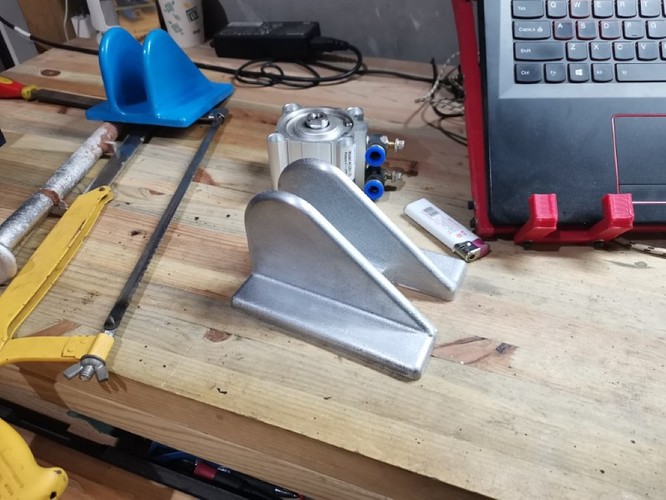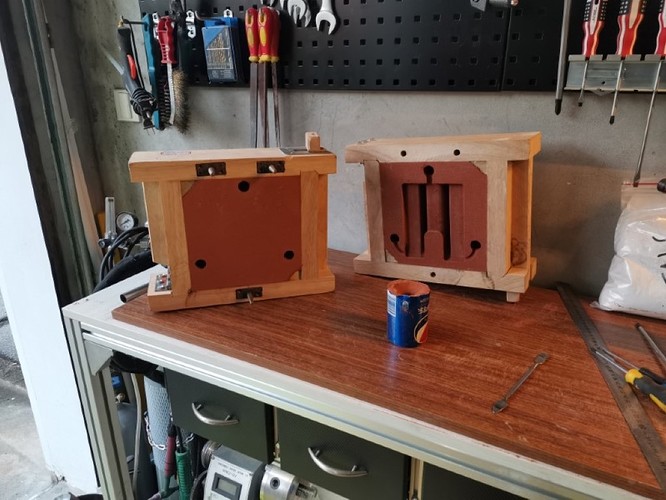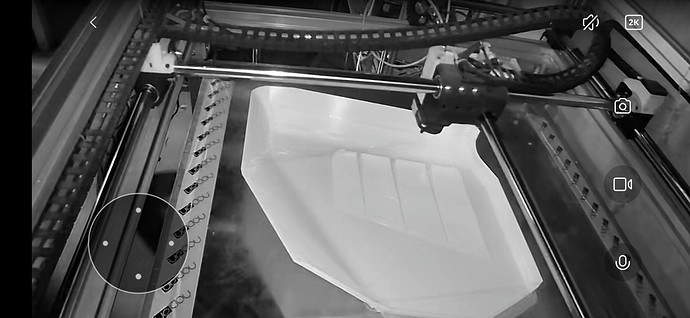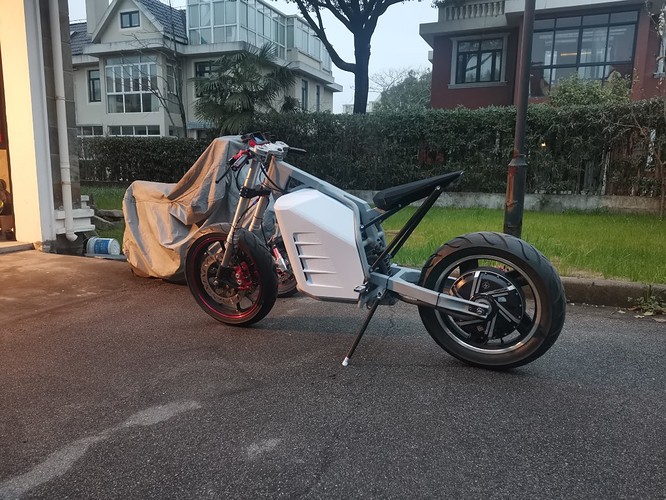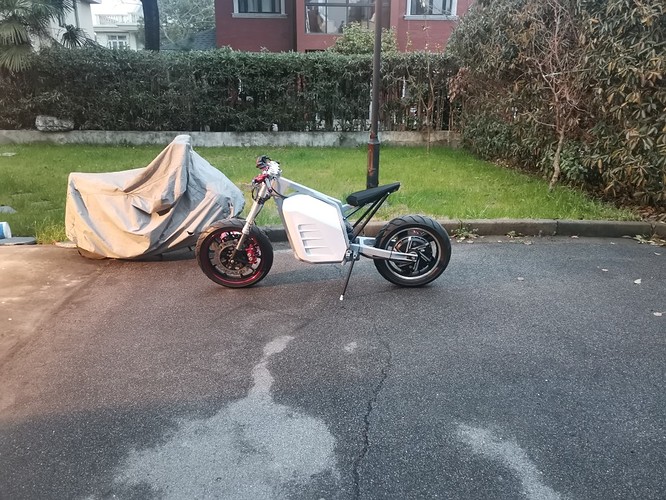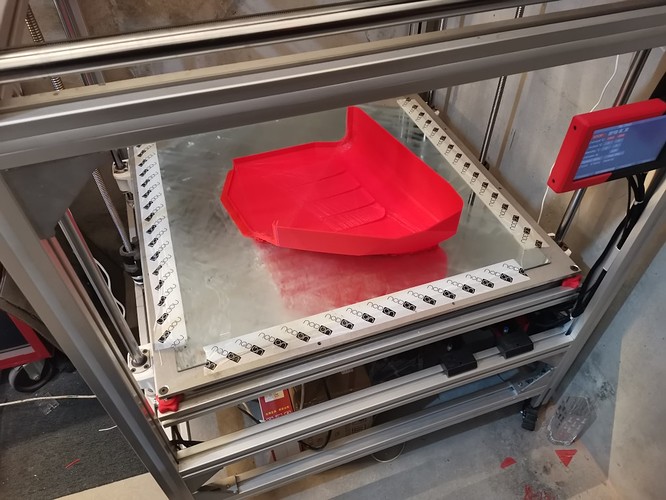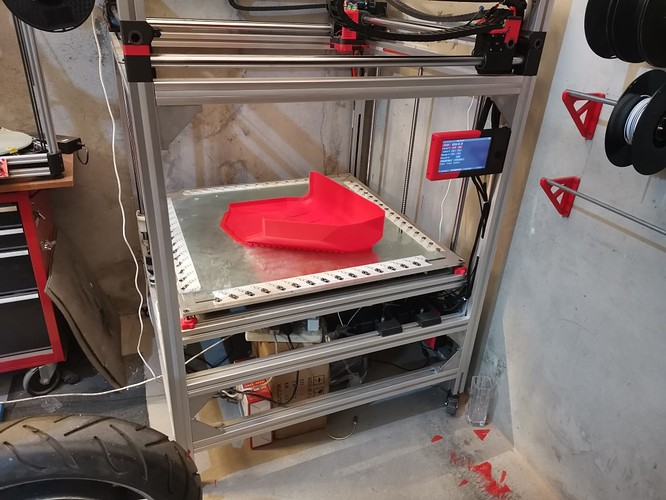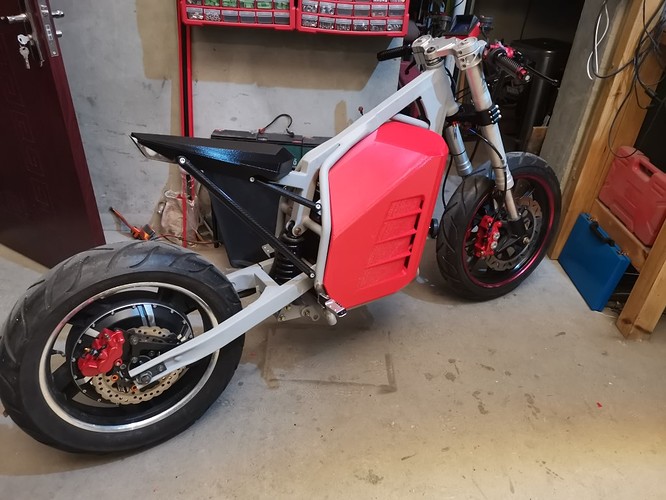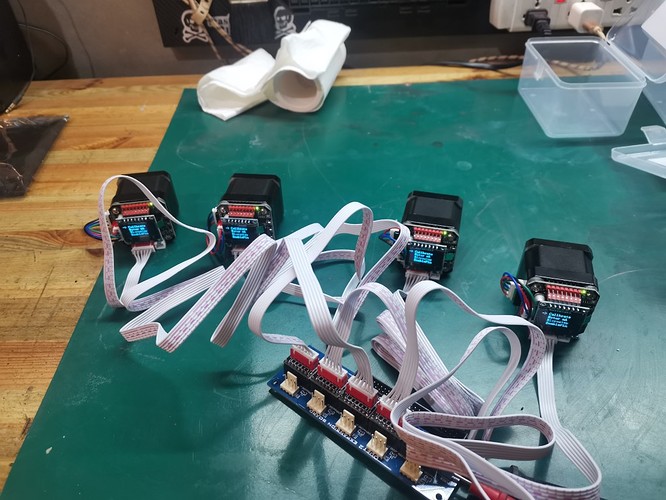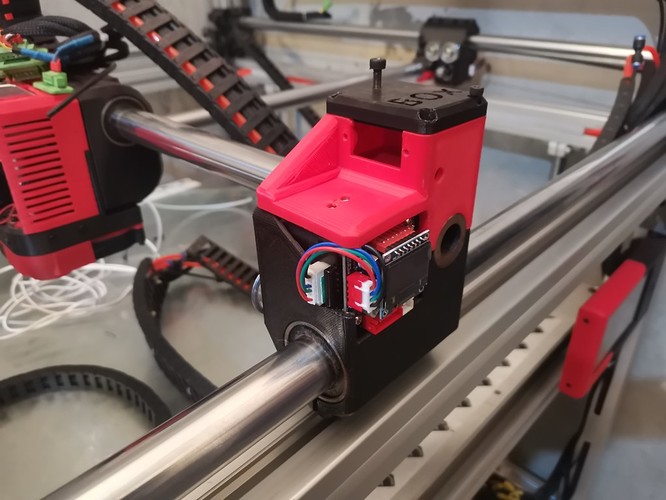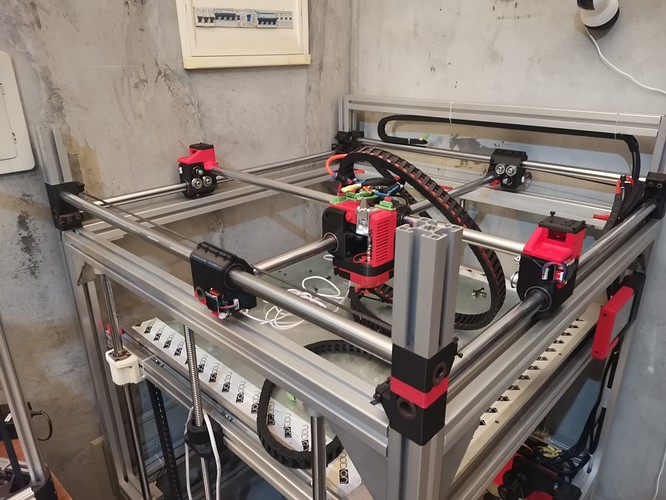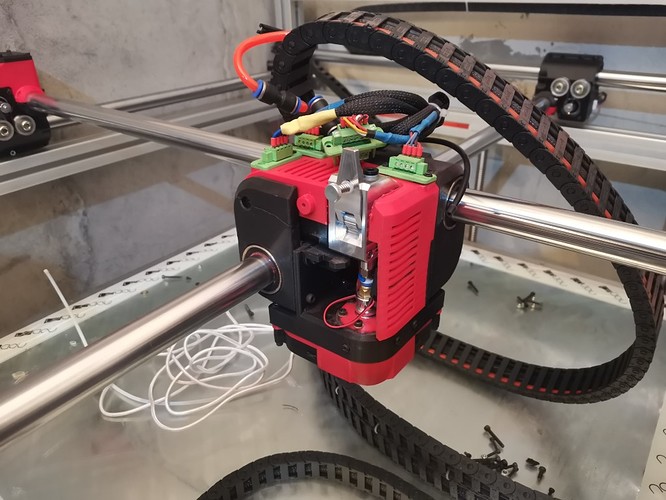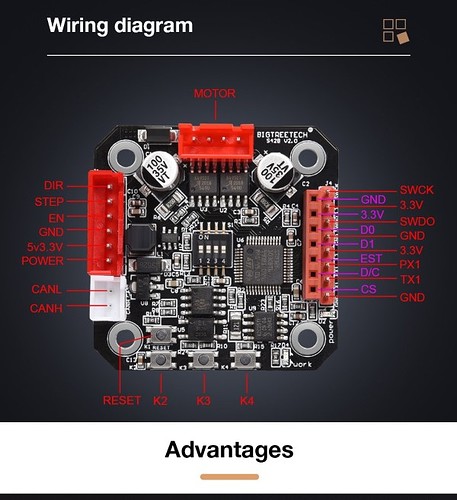I hear You can dry them in your oven, just set it real low and cook it for a few hours… when I have old filament I put it in my food dehydrator and that works like a charm.
So @forcerouge what is next? Going to be trying to cast some 3d parts out of aluminum? I guess it’s possible to do that at home. My boss just showed me pictures of the foundry he built to cast his 3d printed intake manifolds for his car.
I had a try at that, too. Tried using some old steel canisters as crucibles and the sob got so hot it kept melting through them. I made some muffin shaped blobs, half a necklace pendant, and a pretty good Lego before I blew a hole in one so big that it poured alunimum all over the bottom. Since my my air came up through the bottom, it was game over. I’ll probably try again at some point, but not soon.
At any rate, really easy to set up, but it takes some practice to get decent results, lol.
Haha, been there, done that already ![]()
I built my own electric furnace and then tried lost PLA and also a year later sand casting using PLA plugs.
Check here if you want to see how I built it, it’s really not that hard to make. A fun little project anyone can build in a few days:
Here’s the result I got with sand casting:
Making the mold, which is the difficult part:
But actually, it’s funny you should mention that, because I’m about to do it again in order to cast some aluminum brackets for my new motorbike (which made its first wheel spins yesterday BTW, yay!)
I’ve just started tooling up a new to me mill. At some point I want to start using 3d prints to make initial castings to later be milled.
Still a lot of printing for my motorbike project: this should be the final design for my battery covers.
I printed the first one yesterday for the left side, and the right side is being printed right now.
It took almost exactly one kilo of PLA for the first one, the second one will take the same amount. I printed on a finer resolution than usual (0.3mm per layer), but still, the printer managed to do it in around 20 hours.
So, yeah, an entire spool in 20 hours, that’s pretty impressive. Told you guys, this thing is hungry!
I installed a little Xiaomi camera, which is really useful for me because I can monitor the print from anywhere using my smartphone. It can move at 360 degree and has a very nice night mode that can capture really good quality video even in complete dark. Super useful for checking form time to time how things are going during the night.
.
Anyway, the print turned out just fine, and seems to fit very well on the bike:
I hope the second cover will print well too, hopefully it should be done when I’ll be back at home tonight.
Then will come the biggest print: the actual mold to make these things out of cabon fiber!
Estimated print time is about 50 hours and more than 3 kilos of plastic, but the mold design isn’t finished yet so I hope I can optimize a little. It will be gigantic, tha’ts for sure.
When I hear ‘battery cover’ for a motorcycle I think of something quite small, has a whole different meaning when I see the picture-nice work! 
The houses behind the bike in the pic remind me of some neighborhoods I know in NJ. Both the neat things you’re doing with your bike and the houses themselves reinforce my belief that people around the world are more alike than they are different, just another reason why I enjoy this forum. 
I didn’t get to spend much time in China, but from my year in Japan I would say the biggest difference was that the people there were nicer than anywhere I have been in the US XD
But maybe that is just because I was a foreigner ![]()
Yeah, people are nice in China. Though it did change a bit now with the covid.
People are more alike than different indeed, I guess that’s the main lesson you learn from traveling around.
Anyway, the second cover got printed, also in 20 hours and one full spool:
After removing the supports and installed it on the bike:
It printed very well, even better than the first one… except for the first layer: for some weird reason I cannot explain, the first layer is not well bonded with the second one, meaning I was able to peel it off almost entirely.
That’s the first time I see that.
I glued it back on using spray glue so no big deal, but it puzzles me.
That electric motorcycle is looking beautiful. Seeing what he manages to do with his large format 3d printer (which actually looks commercial) encourages me to go ahead in my project of converting my lowrider into a 3d printer / CNC combination. I see the light at the end of the tunnel, now I’m working on the hot bed. I have many projects in mind…  perhaps too many
perhaps too many 
Dude you are a master.
Ok so I’m starting a major update on my machine, trying to convert it to closed loop stepper control.
On very rare occasions, I did see some layer shifts. I know that under some very specific conditions, a certain type of small infills are able to make the printer slipping a few steps. So far, the only solution I had was to dial the speed back, but obviously that’s just lame.
So now I’m going to try and experiment with the bigthreetech S42b v2.0 closed loop steppers, in order to see if I can achieve higher speeds while improving the reliability, without sacrificing print quality.
Sounds like a lot to ask, but I’m curious.
I’ve seen a few videos on those steppers on youtube and they seem to work really well, so hopefully that’ll be the case on my machine too!
Plan is to start using them on X and Y axis, and then later on Z if it turns out to work fine.
Basically anything but the extruder (I do think it is still nice for the extruder to be able to skip step to compensate for problems or bad calibration, if an extruder starts skipping steps there’s usually a good mechanical reason for that to happen, so keep applying more force won’t solve the problem).
Anyway, I received 4 of these motors and quickly tested them:
They seem to work nicely, the screen is kinda cute. First thing I did was to calibrate them, which took about a minute (the motor will turn very slowly until it ltells you that it needs to be reset). Then I checked the rest of the menu, which allows you to chose microstepping, maximum current, invert direction and some other stuff.
Pretty neat.
I just wish there were some kind of test menu, where you could ask the motor to perform some kind of sequence (one full turn left, then one full turn right for example), just to see if everything’s in order.
not very important though.
The only issue with these steppers is that, instead of 4 wires, they need 6 wires. So, yeah, you guessed it, I have to redo my wiring for the billionth time… But I’ll also have to redesign and reprint my electronics enclosure as well as a few other parts. So that’ll be a lot of work actually.
I removed the old motors and installed the new ones:
I’ll prepare the wiring this weekend. I’ll also have to figure out how I should connect that to my duet board and how to modify my firmware. In theory, This extension board combined with the duet allows me to go for 10 axis!
In practice, I’m not sure whether Reprap Firmware allows for stuff like autosquare. If it does, then I’ll use auto square for X and Y, then add a third Z axis (it’s something I planned to do for a while now in order to get the bed perfect), and I’ll still have 3 axis left for 3 extruders. Would be a hell of a machine, tha’t for sure.
But I need to get educated regarding what this would imply in terms of firmware mods, I hope it’ll be simple enough.
Also, I took this opportunity to try fitting a beefy aluminum bondtech style extruder:
The previous extruder I installed worked well, but it was a pain in the ass to load the filament in it, it wasn’t well guided inside so it was really frustrating. This one being geared and full aluminum, I expect it to heat far less (I had to install a fan on my previous extruder motor, otherwise it was getting too hot, to the point it started melting the carriage)
Now it’s time to start making the new electronics enclosure (I’ll keep the current design, just make it bigger)
It’s a bummer they use 6 wires. I can’t figure out why. Vcc, Gnd, Enable, Step, Dir is 5. Maybe they also want the reset or fault pins or something. Maybe there will be a version in the future with just Vcc, Gnd, and two data pins so we can keep our wiring.
If more people allowed their extruders to skip steps then there would never be a “grinding filament” issue.
Good question, seems like they also have a pin labeled “5V 3.3V”
Don’t really know what they mean by that exactly, also not really sure why they would need that since it seems like the board has a voltage regulator already.
They include a 6 wire cable in the package so for people who have a motherboard using stepsticks it’s pretty much plug and play.
Anyway, 5 or 6 wires for me it’s the same problem, but yeah just 4 wires would be better.
Let’s just hope that they worth all this work!
The 3.3 and all that looks like its for firmware development and debugging, SWCK and SWD are used for ARM chip debugging, and then PX1/TX1 are probably for a serial connection for logging (I assume PX1 was supposed to be RX1)
The pink labels on are for a SPI connection for the TFT LCD.
You could actually do a 4-wire connection over CAN-BUS using the CANL/CANH, GND, and 5v, but I don’t think Duet can do that yet. You’d have to do something like a Raspberry Pi running Klipper, and a USB-CAN interface, similar to the Huvud control boards. But that would be a complete restart for your setup, instead of just sticking with your Duet and RRF
If the board supported can. We were looking at the 6 pins on the left, and the 5v3.3V pin.
My guess would be step, dir, and gnd would be connected like you would an external TB6600. Then power would be your +12v motor power. 5v3.3v would be +3.3v or +5v power for the driver?
That was my thinking. Power is stepper voltage. 5v3.3v pin is digital voltage
Strange labelling or not, I appreciate a clean, well designed pinout diagram.
